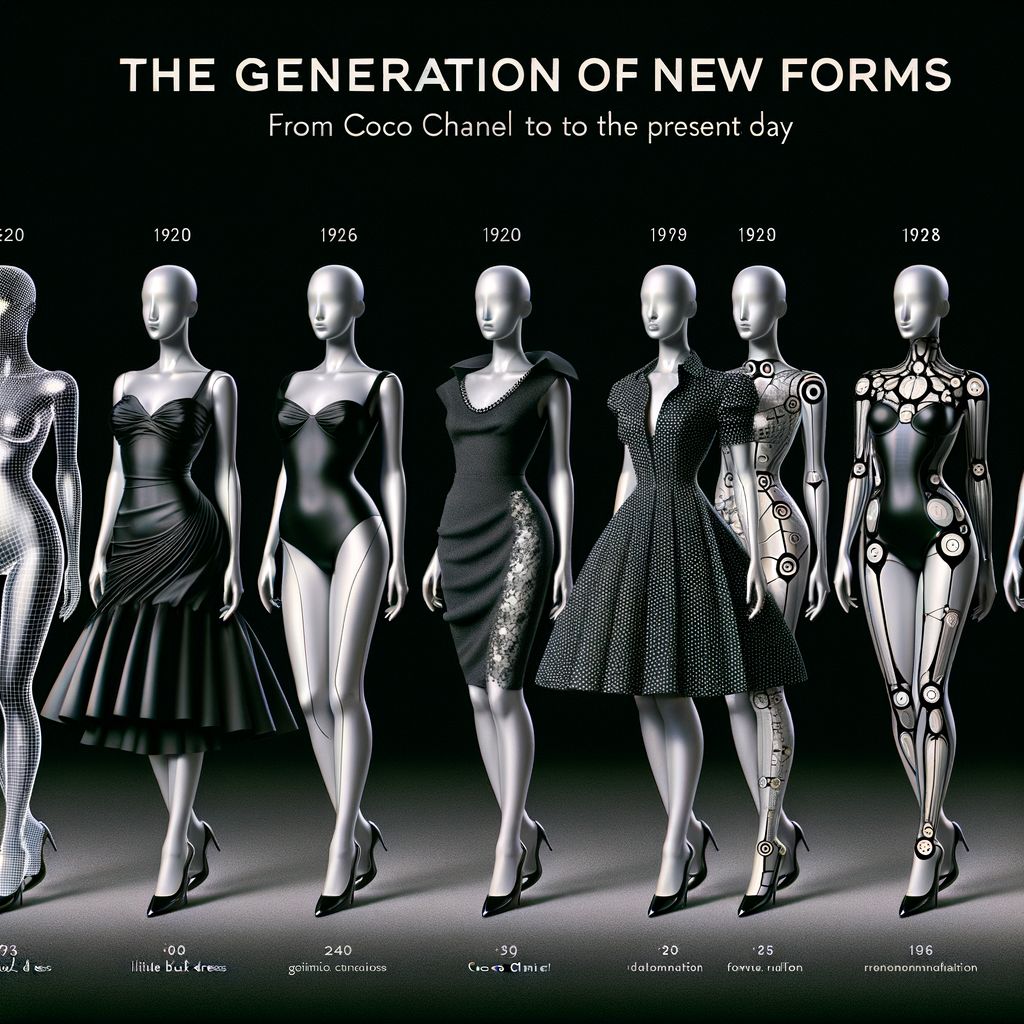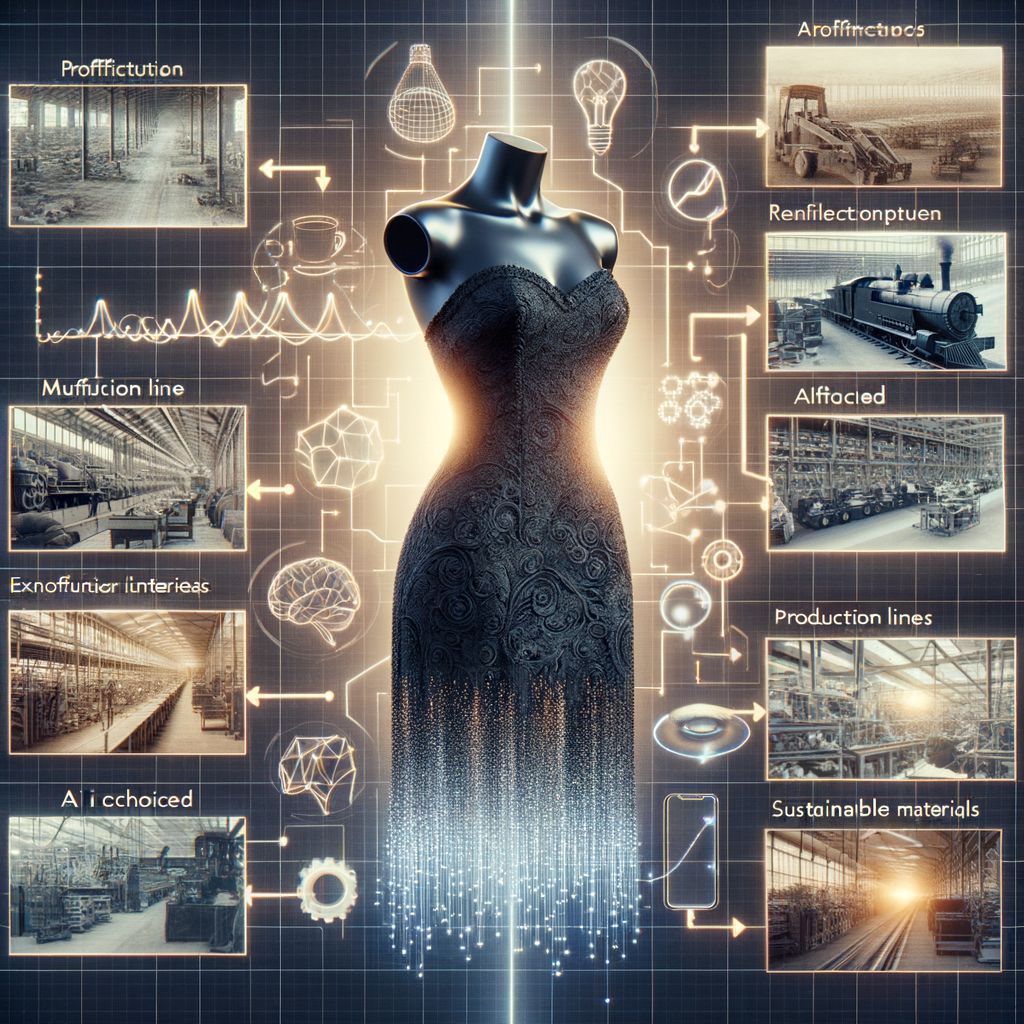The little black dress is not just a wardrobe item but a symbol of eras, change, and women’s emancipation. Its story began in 1926 when the legendary Coco Chanel introduced the world to a simple black crepe dress in Vogue magazine. At the time, black was associated with mourning and far from high fashion, but thanks to Chanel’s vision, it became the embodiment of elegance and versatility. The simplicity of the cut and the absence of excessive embellishments made this dress accessible to women of different social backgrounds, and its democratic style quickly won the hearts of fashion lovers around the world.
In the following decades, the little black dress repeatedly transformed, reflecting the cultural trends of the times. In 1961, Audrey Hepburn wore a Givenchy dress in the film “Breakfast at Tiffany’s” — this look became iconic and firmly established the dress as an eternal classic. In the 1980s, the silhouette became bolder and edgier through experiments with fabrics and shapes. Today, the little black dress remains a must-have wardrobe item, capable of adapting to any style — from minimalism to avant-garde.
The key advantage of this piece of clothing has always been its versatility: it is suitable for the office, a party, or a formal event. Thanks to its history, the little black dress has become a symbol of women’s independence, elegance, and inner strength. And while its classic silhouette remains recognizable, modern technologies allow this iconic outfit to be reimagined again and again.
Modern Technologies in Fashion: The Role of Artificial Intelligence
Fashion today stands on the threshold of a new era thanks to the introduction of artificial intelligence (AI). Machine learning systems analyze vast amounts of data on trends, consumer preferences, and fabric properties, enabling the creation of clothing that best meets consumer expectations. AI is actively used in companies like Zara, H&M, Stitch Fix, and even luxury brands such as Gucci and Burberry.
According to a McKinsey & Company study from 2023, more than 30% of global brands have already integrated AI elements into their design and production processes. Among the most popular solutions are generating new models based on fashion show analysis, automating fabric selection based on their properties, and forecasting demand for certain styles.
AI accelerates the development cycle of collections: if creating a single design once took weeks or even months, now neural networks can suggest dozens of options in just a few hours. This is especially relevant for the fast-changing fast fashion industry, where speed of response to trends becomes a key competitive advantage.
Moreover, modern technologies help designers go beyond familiar styles and experiment with shapes and materials. For example, The Little Black Dress platform uses generative design algorithms to create unique variations of the classic silhouette of the little black dress — from futuristic to vintage interpretations.
Generating New Looks: How AI Reinvents the Classic Silhouette

In recent years, artificial intelligence has become an integral part of the creative process in the fashion industry. Generative design technologies make it possible to create unique variations of familiar items — such as the little black dress — that were previously impossible without human involvement.
Machine learning algorithms analyze fashion house archives, runway photos from different eras, and user preferences on social media. Based on this data, AI creates new designs by combining elements of various styles: puff sleeves from the 1980s may be paired with a minimalist cut from the 1920s or futuristic details from the 21st century. This approach allows designers to expand creative boundaries without spending months on manual sketch work.
An example of successful integration of such technologies is the platform The Little Black Dress AI Edition. It uses neural networks to create collections of virtual outfits: users can choose a preferred silhouette or even upload their own photo for personalized styling. Thanks to this, anyone can become a co-creator of their ideal little black dress.
According to a report by the Fashion Innovation Agency (2024), more than 40% of young designers use AI to generate ideas when developing new collections. This opens completely new horizons for the industry: unique pieces become more accessible to a wider audience, while classic looks gain a second life through the lens of modern technologies.
Personalized Design: Opportunities for Individual Style
One of the main advantages of introducing artificial intelligence into fashion is the ability to deeply personalize clothing to meet specific customer needs. If custom tailoring used to be the prerogative of luxury ateliers like Dior or Chanel Haute Couture, today you can personalize a design online in just a few minutes.
Modern platforms offer clients the ability to choose not only the cut or length of a garment but also details such as neckline shape, sleeve type, or lace/sequin decoration. For example:
- Adjusting length to match client’s height
- Selecting fabric (silk, cotton, viscose)
- Adding custom embroidery or monograms
- Choosing trim colors
- Inserting elements with digital prints
Such services are especially popular among millennials and Gen Z: according to Statista (2023), about 55% of buyers in this age group are willing to pay more for personalized items.
The table below shows the average cost of a personalized little black dress on popular online platforms:
| Platform | Base Price ($) | Personalization Options | Average Final Price ($) |
|---|---|---|---|
| The Little Black Dress | 120 | 10+ | 180 |
| Farfetch Custom | 200 | 15+ | 320 |
| Selfridges Made-to-Order | 250 | 12+ | 350 |
Innovative solutions not only allow individuals to express themselves through clothing but also make the shopping process more conscious — since each item is created specifically for the customer.
The Impact of AI on Material Selection and Sustainable Production

With growing attention to environmental issues, fashion faces the need to rethink traditional clothing production methods. Artificial intelligence becomes a key tool for increasing industry sustainability by optimizing material selection and reducing waste.
Modern algorithms can analyze the life cycle of fabrics — from raw material extraction to garment disposal — and recommend optimal options in terms of sustainability and durability. For example, The Little Black Dress platform implements AI to select organic cotton fabrics with a minimal carbon footprint or innovative recycled materials like Tencel™ Lyocell.
Experts highlight several advantages of using AI for sustainable development:
- Minimizing overproduction through accurate demand forecasting
- Optimizing fabric cutting to reduce waste
- Selecting materials based on biodegradability
- Monitoring suppliers for ethical practices
According to a Global Fashion Agenda (2023) report, brands that use AI in fabric and accessory supply chains reduce CO2 emissions by up to 25% compared to traditional production models.
As a result, the integration of digital technologies contributes to a more responsible approach to creating even such basic items as the little black dress — making it not only a stylish wardrobe accessory but also an example of conscious consumption.
Interactive Platforms and Virtual Fittings
One of the most notable trends of recent years has been the development of interactive platforms for online clothing shopping using augmented reality (AR) and virtual reality (VR) technologies. Now shoppers can try on outfits remotely — simply by uploading their photo or using a smartphone/laptop camera.
Platforms like The Little Black Dress offer innovative solutions:
- Virtual fitting room: displaying the chosen model on the user’s figure in real time
- Perfect size selection based on anthropometric data analysis
- Instant comparison of different styles/decorations of one model
- Creation of a personal virtual wardrobe
Such services increase customer trust in online shopping: according to Adobe Analytics (2023), using AR fitting rooms reduces clothing returns by 22%. This saves brand resources and makes the shopping process more comfortable for the user.
Thanks to interactivity, the client can test dozens of variations of one silhouette before making a choice — significantly expanding creative possibilities without the need to visit physical stores or showrooms.
The Fashion Industry and Consumer Response to Innovation
The integration of artificial intelligence elicits strong reactions from both fashion professionals and end consumers. Fashion houses see digital tools as a way to speed up collection design processes without losing the quality of craftsmanship; designers gain new sources of inspiration; and consumers value the opportunity to participate in creating personalized pieces.
A Business of Fashion (2024) study revealed:
- More than 60% of major brands plan to increase investments in digital technologies by the end of the year.
- About 70% of young designers consider AI an indispensable tool for idea generation.
- Almost half of surveyed consumers noted improved user experience thanks to AR/VR fitting rooms.
- Among concerns, 28% of respondents mentioned the potential loss of the “soul” of craftsmanship due to mass automation.
Nevertheless, leading companies strive to find a balance between innovation and preserving craftsmanship traditions: many collaborations between artist-designers and IT teams demonstrate a successful symbiosis of human creativity with the power of machine learning algorithms.
Bright examples include collaborations such as Gucci x Roblox (virtual collections), Burberry x IBM Watson (trend analytics), or the launch of exclusive NFT dresses by Dolce & Gabbana in the Decentraland metaverse in spring 2024.
The Future of the Little Black Dress in the Digital Era
Digital transformation opens up entirely new prospects for the development of classic wardrobe elements. The little black dress is no longer just a garment — it becomes an interactive platform for self-expression thanks to artificial intelligence, augmented reality, and online design customization.
Experts predict the following development directions for the coming years:
- Growth in popularity of virtual collections: users will be able to buy digital versions of dresses for their avatars in metaverses.
- Advanced personalization: algorithms will take into account not only clients’ physical parameters but also their tastes by analyzing social media, playlists, and lifestyle.
- Sustainable production: the emergence of new biodegradable fabrics under AI supervision will help reduce the fashion industry’s environmental impact.
- Global accessibility: even small local brands will be able to enter the global market through digital storefronts.
- Cross-border collaborations: designers from different countries will create joint collections online without geographical limitations.
- Integration of wearable gadgets: the emergence of “smart” dresses with built-in health sensors or LED decor controlled by mobile apps.
- New art forms: the growth of NFT fashion will open additional revenue streams for creators of unique digital outfits.
- Educational platforms: the launch of courses on self-creating clothing designs with AI tools from home.
- Customer behavior analytics: systems will suggest new styles based on users’ purchase histories.
- Development of ecosystems around one product: communities of designers, stylists, and users worldwide will form around the little black dress.
Thus, the iconic little black dress is getting a second life: it becomes not only a reflection of the style of the digital fashion revolution but also a tool for shaping a new level of individuality for everyone, regardless of age or social status.